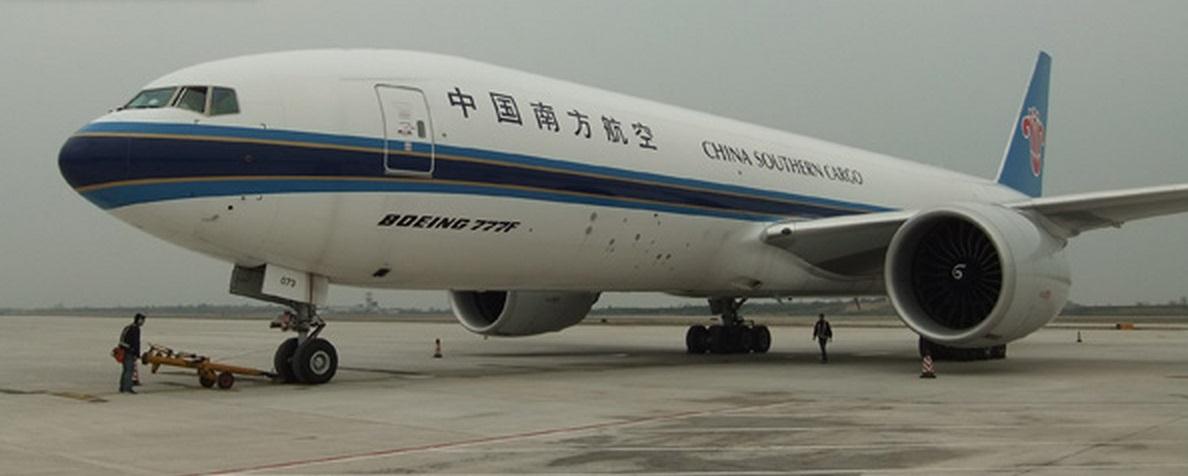In a fierce battle over a pie that is growing less than the capacity chasing it, airlines have dropped rates out of China to record low levels, causing fresh concerns over shrinking yields.
According to shipping consultancy Drewry, air freight rates in east-west trade lanes plumbed new depths in June. Its East-West Air Freight Price Index continued its downward momentum in that month with a decline of 1.1 points, which brought it to a reading of 88.7, its lowest level since it was first launched in May 2012. In US dollar terms, this translated into a drop below the $2.90-per-kg threshold.
“Whereas the eastbound trans-Pacific has taken the brunt of pricing falls in recent months, June’s decline affected all the main East-West trades in broadly equal measure,” Drewry commented on the results.
“Weak cargo growth coupled with rising capacity has further weakened the market, the latter fuelled by booming passenger demand which added more unwanted bellyhold space,” the consultancy added.
Airlines based in the Asia-Pacific region have felt the pain. Statistics for June from the International Air Transport Association show a decline of 0.3% in freight tonne-kilometres for them collectively, whereas capacity – measured in available tonne-kilometres – went up 4.0%.
The chief battleground has been the Chinese export market, where capacity has been rising – both in terms of bellyhold and maindeck lift – whereas export growth has slowed down. Lufthansa Cargo recently lowered its 2015 earnings target, citing weaker demand from China and overcapacity in the market as the chief concerns. The German carrier’s sales in the Asia-Pacific region were down 3.2% in May.
According to some sources, Chinese carriers have been aggressively chasing market share as their lift is going up. Air China Cargo’s freighter fleet has been growing with more B777 freighters coming on stream. The carrier now has seven B777-200Fs in service, with the eighth due later this year.

China Southern has added altogether four B777-200Fs to its line-up this year, bringing its freighter fleet to 12 units, the largest contingent of 777Fs in China and the third-largest worldwide. Bent on building up its Guangzhou hub as an intercontinental gateway, it has launched two new freighter routes to Europe this year.
The Chinese airlines are not the only culprits in the latest round of battle for market share. Some European carriers, including all-cargo operators, have also dropped prices significantly to attract freight. Air France-KLM recently admitted to “extremely aggressive pricing” in an effort to maintain market share, for which it blamed a fiercely competitive market. In the first five months of this year the carrier’s unit revenues per available ton-kilometre were down by 10%.
Noting that bellyhold capacity to Europe has been on the rise, Mark Sutch, general manager of cargo sales and marketing at Cathay Pacific, noted that huge capacity has “led to some far from healthy yields and there are carriers getting into that game.”
Although faring better than the Asia-Europe sector, the transpacific trade lane has not been impervious to such developments. Yields have been under pressure in a market that has been “far from healthy,” he said.
“Direct trans-Pac capacity ex-China has been a challenge to yields,” he continued, adding that Cathay has managed to balance its traffic mix, notably by taking advantage of some strong demand out of Southeast Asia across the Pacific.
Forwarders have signalled that their own margins out of China have come under pressure as carriers slashed their rates drastically.
There is little hope of air freight rates returning to more sustainable levels in the near future as the outlook for exports from China remains depressed. In July exports sank 8.3% to US$195.1 billion, which the authorities attributed to weak demand from Europe and the strong Chinese currency.
The reverse in July dashed hopes for a recovery after June had produced the first month-on-month increase in exports since February. Imports also continued a downward trend. They fell 8.1% in July to $152.1 billion, marking nine consecutive months of decline.
Drewry expressed doubts about a rate recovery, noting that bellyhold capacity is set to rise further in the coming months.
By Ian Putzger
Air Freight Correspondent | Toronto




